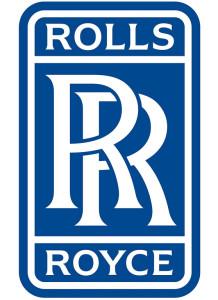Rolls-Royce has introduced a new technology demonstrator engine called the Advance3. The engine incorporates a total of about 20,000 parts, and has achieved more than 100 hours of testing. Several of the parts have been 3D printed, with others made from ceramic matrix composites, and they have been showing excellent performance.
The tests began last November, and the engine achieved full power in July. Engineers have downloaded millions of data points from the tests so far. Advance3 is a precursor to the IntelligentEngine, a next-generation engine that Rolls-Royce plans to build using advanced technology and digital capabilities.
“Testing so far has been completely seamless, which is an outstanding achievement when you realise that this is an engine incorporating a range of new technologies as well as a brand new core architecture,” said Ash Owen, Chief Engineer, Civil Aerospace Demonstrator Programs at Rolls-Royce. “We have completed our first phase of testing and analysing the results right now. We like what we see from the CMC (ceramic matrix composites) and ALM (additive layer manufacturing) parts performance.”
 Ceramic matrix composites can withstand higher operating temperatures and require much less cooling air. They also greatly reduce weight, all of which improve efficiency. 3D printing, meanwhile, allows complex parts to be produced with fewer components, or even as only one component altogether. It also reduces weight and improves efficiency while allowing the manufacture of geometries that would not be possible with other production methods.
Ceramic matrix composites can withstand higher operating temperatures and require much less cooling air. They also greatly reduce weight, all of which improve efficiency. 3D printing, meanwhile, allows complex parts to be produced with fewer components, or even as only one component altogether. It also reduces weight and improves efficiency while allowing the manufacture of geometries that would not be possible with other production methods.
The Advance3 demonstrator is an element in Rolls-Royce’s plans to develop the Advance core for the UltraFan engine, which will be available starting in 2025. It will offer a 25 percent improvement in fuel efficiency compared to a first generation Trent engine. The core of the demonstrator operates between a Trent XWB fan system and a Trent 1000 low pressure turbine. Its compressor system helps to deliver an UltraFan overall pressure ratio of up to 70:1.
Rolls-Royce is not new to 3D printing; the company’s Phantom model has more than 10,000 3D printed parts, and in 2015, Rolls-Royce flew its most powerful jet engine ever, which contained 3D printed parts as well. The company, as well as its parent company BMW, has been a leader in using 3D printing in the automotive and aerospace industries.
Rolls-Royce introduced its vision for the IntelligentEngine earlier this year. The engine truly will be intelligent – it will be connected to other engines, its support ecosystems, and its customers, and it will be aware of its operating context, its constraints and customer needs, allowing it to respond to the environment around it without human intervention. It will also learn from its experiences and from its network of peers to adjust its behavior and achieve its best performance.
“We are determined to pioneer the power that matters for our customers and our IntelligentEngine vision will allow us to do this,” said Dominic Horwood, Rolls-Royce, Director, Customer and Services – Civil Aerospace. “We have the right people, the right skills and the right infrastructure to grasp this opportunity and deliver world-beating digital insight, helping us to deliver even greater value for our customers.”
Discuss this and other 3D printing topics at 3DPrintBoard.com or share your thoughts below.
[Images: Rolls-Royce]
Subscribe to Our Email Newsletter
Stay up-to-date on all the latest news from the 3D printing industry and receive information and offers from third party vendors.
You May Also Like
Gorilla Sports GE’s First 3D Printed Titanium Cast
How do you help a gorilla with a broken arm? Sounds like the start of a bad joke a zookeeper might tell, but it’s an actual dilemma recently faced by...
Nylon 3D Printed Parts Made More Functional with Coatings & Colors
Parts 3D printed from polyamide (PA, Nylon) 12 using powder bed fusion (PBF) are a mainstay in the additive manufacturing (AM) industry. While post-finishing processes have improved the porosity of...
$25M to Back Sintavia’s Largest Expansion of Metal 3D Printing Capacity Since 2019
Sintavia, the digital manufacturing company specializing in mission-critical parts for strategic sectors, announced a $25 million investment to increase its production capacity, the largest expansion to its operations since 2019....
Velo3D Initiates Public Offering in a Bid to Strengthen Financial Foundations and Drive Future Growth
Velo3D (NYSE: VLD) has been among a number of publicly traded 3D printing firms that have attempted to weather the current macroeconomic climate. After posting a challenging financial report for 2023,...

































